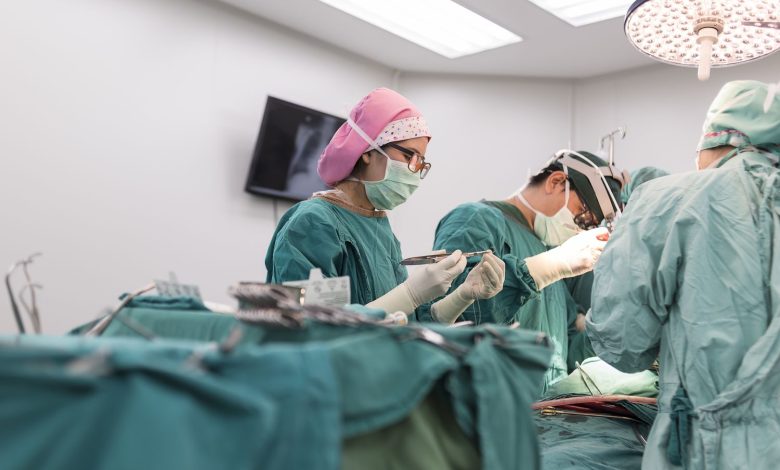10 Important Facts About Bone Marrow Transplants

10 Important Facts About Bone Marrow Transplants
Leukemia and lymphoma are deadly diseases that can affect a person’s emotional, mental, and physical health. Bone marrow transplants are a ray of hope that give people a chance to get better. But because people don’t know much about this procedure, they often have a lot of questions and worries. This article tries to give a full picture of bone marrow transplants by explaining ten important things that patients and their caretakers should know before choosing this treatment.
Bone Marrow Transplants in India: An Overview
Before you can understand what a bone marrow transplant in India is about, you need to know what this medical procedure is all about. In a bone marrow transplant, the spongy tissue inside the bones that makes blood cells is replaced. This is done because disease, infection, or aggressive treatments like chemotherapy can damage or kill the bone marrow. This procedure involves transplanting blood stem cells that go to the bone marrow and help it grow new marrow. This makes it easier for new blood cells to be made.
Learn About the Different Kinds of Bone Marrow Transplants
In general, there are two types of bone marrow transplants: autologous transplants and allogeneic transplants. In Autologous Transplants, stem cells from the patient are used. Before the patient gets high-dose chemotherapy or radiation therapy, these cells are taken out and kept. Allogeneic transplants, on the other hand, use stem cells from a donor. To make sure a transplant works, the tissue type of the donor should be similar to that of the patient. The choice between these two depends a lot on the patient’s disease, their overall health, and whether or not a suitable donor is available.
How Important it is to Match HLA?
Human leukocyte antigen (HLA) matching is an important part of how well bone marrow transplantation works as a whole. HLA are proteins that are found on most of the body’s cells. They help the immune system tell the difference between the body’s cells and cells from outside the body. Making sure that the donor and the recipient are a close HLA match reduces the risk of transplant complications.
Trying to Think Ahead About Possible Risks and Problems
Even though bone marrow transplants have the potential to save lives, they are not risk-free. These include graft-versus-host disease (GVHD), which is when the donated cells attack the body of the recipient, and graft failure, which is when the new cells don’t take hold in the body. Infections, organ damage, and, in very rare cases, the growth of new types of cancer are also possible problems.
Why Pre-Transplant Evaluation Is Important?
A thorough evaluation must be done on a patient before they can get a bone marrow transplant. This thorough health evaluation is meant to find out how the patient’s body is doing and if it is ready for the transplant. It includes many different tests and procedures, such as blood tests, imaging studies, heart and lung evaluations, and sometimes bone marrow biopsies.
Having to Go Through the Conditioning Program
Before the transplant, patients go through a conditioning regimen that may include high-dose chemotherapy, radiation therapy, or a combination of the two. This is done to get rid of the patient’s existing bone marrow and weaken the immune system to make it less likely that the transplant will be rejected. Immunosuppressants are given during any transplantation to help the body accept the treatment.
How Does a Transplant Work?
The process of getting a bone marrow transplant is a lot like getting a blood transfusion. The donor stem cells are given to the patient through an IV line. This can take several hours. Once these stem cells are put into the body through an IV, they go to the bone marrow and start making new blood cells there.
Focusing on Care After Transplant
Care after a transplant is one of the most important parts of a patient’s road to recovery. The patient must take the medications exactly as prescribed, go to regular follow-up appointments, deal with side effects, and live a healthy life. During this time, patients are more likely to get sick, so they must practice good hygiene and stay away from possible sources of infection.
How do Caregivers Play a Part in the Transplant Journey?
A bone marrow transplant is both a medical and an emotional journey. In this case, caregivers are very important. Caregivers are the unsung heroes of the transplant journey. They provide both physical and emotional support, such as help with daily tasks and rides to medical appointments.
Taking into Account That Transplants Don’t Always Cure Diseases
Bone marrow transplants can be very helpful, but it’s important to remember that they may not always cure the disease that’s causing the problem. In some situations, the disease could come back after a transplant. So, it’s important to talk honestly with the healthcare team about the transplant procedure’s goals, benefits, and possible risks.
In the end, anyone who is thinking about getting a bone marrow transplant in India should learn as much as they can about it. Even though bone marrow transplants are complicated, they are often the best chance of survival for people with certain life-threatening diseases. As a patient or caretaker, knowing a lot about this procedure can help you set realistic goals and make the transplant process less scary. So, it’s important to talk to the healthcare team about any questions or worries you have. In this field, institutions like BLK Max Hospital are in the lead. Their commitment to using the latest advances in the field and their dedication to patient care give a lot of patients and their families peace of mind and hope, which shows how far bone marrow transplants have come.
Read: Advancements in Kidney Transplant Surgery: Innovations and Breakthroughs


